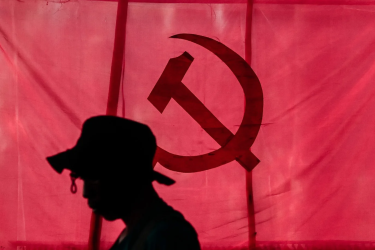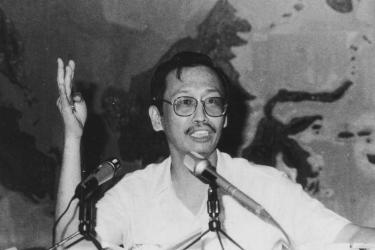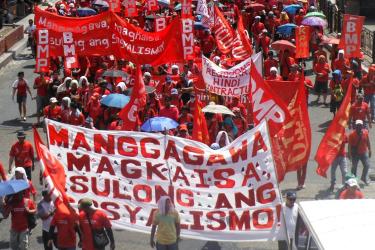Communist Party of the Philippines

Communist Party of the Philippines: Background to the 1993 Split

Leninism versus Stalinism: The debate in the Communist Party of the Philippines

The BMP’s resolute struggle for socialism in the Philippines
Filipinas: Las contradicciones del régimen Duterte

Philippines: The contradictions of the Rodrigo Duterte regime

By Sonny Melencio
Philippine Left facing a Duterte-CPP Coalition Government?, plus Duterte, a socio-political outcome

Philippines: Veteran revolutionary reflects on stormy times and prospects for the left

Full Quarter Storms
By Sonny Melencio
2010, Transform Asia Inc.
Philippines: Extrajudicial killings and the struggle for land reform under ‘Noynoy’ Aquino

Satur Ocampo.
Satur Ocampo, Bayan Muna president, interviewed by Reihana Mohideen
August 11, 2010 -- Some 1205 extrajudicial, summary or arbitrary killings, largely political activists and journalists, took place under the government of former Philippines president Gloria Macapagal Arroyo, according to the human rights organisation Karapatan. In the few weeks since the June 30 inauguration of the new president Benigno “Noynoy” Aquino III, six extrajudicial killings have taken place, three being members of organisations aligned with the Bayan Muna (Country First) party.
Bayan Muna is an electoral formation and Satur Ocampo is its president. Ocampo is a former member of the Philippines Congress representing Bayan Muna, when Bayan Muna topped the 2001 and 2004 party list elections (the system of proportional representation for the marginalised sectors). Ocampo headed the peace negotiations panel of the National Democratic Front, allied with the Communist Party of the Philippines–New People’s Army (CPP-NPA), after the collapse of the Marcos dictatorship in 1986.
The electoral debacle of the Philippines left
By Reihana Mohideen
[The first two in a series of commentaries in the lead-up to the May 10, 2010 elections in the Philippines.]
The Philippines left and Corazon Aquino

Corazon Aquino (far right) in 1986.

